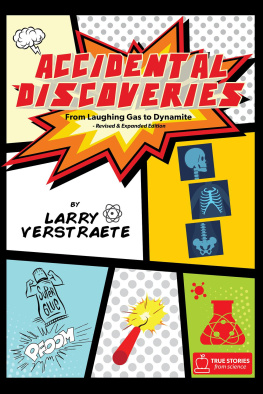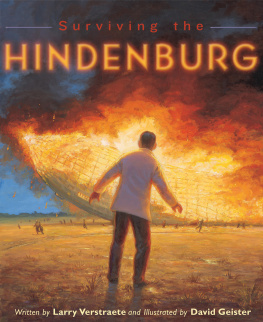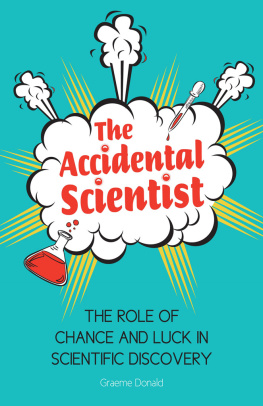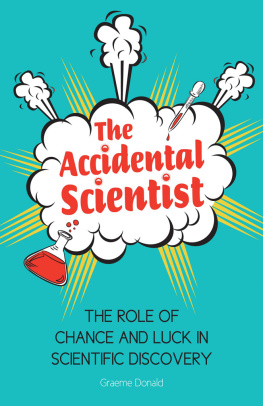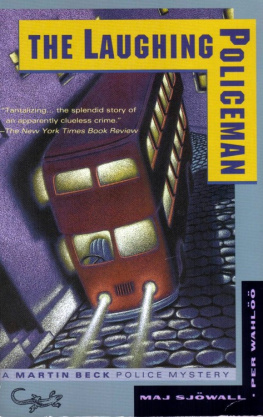Accidental Discoveries
From Laughing Gas to Dynamite - Revised & Expanded Edition
Larry Verstraete
Suite - Fort St Victoria, BC , V8V 3K2 Canada
www.friesenpress.com
Copyright 2016 by Larry Verstraete Revised Edition 2016
Revised and Expanded Edition Previously published by Scholastic Canada Ltd.under the titles: Accidental Discoveries: From Laughing Gas to Dynamite & The Serendipity Effect Copyright 1989, 1999, 2015 by Larry Verstraete
All rights reserved.
No part of this publication may be reproduced in any form, or by any means, electronic or mechanical, including photocopying, recording, or any information browsing, storage, or retrieval system, without permission in writing from FriesenPress.
ISBN 978-1-4602-7721-8 (Paperback) 978-1-4602-7722-5 (eBook)
Science, Experiments & Projects
Distributed to the trade by The Ingram Book Company
Dedicated, as always, to my family - with love
And to the memory of my parents, George and Paula
Table of Contents
Other Books by Larry Verstraete
Dinosaurs of the Deep: Discover Prehistoric Marine Life, Turnstone Press
Missing in Paradise, Rebelight Publishing Inc.
Life or Death: Surviving the Impossible, Scholastic Canada
Surviving the Hindenburg , Sleeping Bear Press
Case Files: Murders and Mysteries Solved by Science , Scholastic Canada
S is for Scientists: A Discovery Alphabet, Sleeping Bear Press
At the Edge: Daring Acts in Desperate Times, Scholastic Canada
G is for Golden Boy: A Manitoba Alphabet, Sleeping Bear Press
Lost Treasures: True Stories of Discovery, Scholastic Canada
Survivors: True Death-Defying Escapes, Scholastic Canada
Extreme Science: Science in the Danger Zone Scholastic Canada
Whose Bright Idea Was It?: True Stories of Invention, Scholastic Canada
Mysteries of Time, Scholastic Canada
ix
Author ' s Note
The concept for this book, like much of its content, stemmed from unexpected circumstances. Years ago, as a newbie writer learning the trade, I signed up for a correspondence writing course in childrens literature. The first few assignments involved writing fiction, but the fourth required something different. Write a non-fiction article for a childrens maga- zine, the instructions said. With a background in science and a teaching career already in full swing, I dipped into a com- fortable subject and selected lightning, a topic I felt would captivate young readers.
In my research for the article, the name Benjamin Franklin surfaced. So did the famous and familiar story of his danger- ous kite-in-a-lightning-storm experiment. Then, as I dug deeper into my research material, I encountered another story about Franklin, one that occurred two years before the kite experiment. It involved a holiday party, a turkey destined for electrocution, a colossal accident on Franklins part, and a discovery that altered the course of history. Right then, I realized that Id discovered writers gold a story so odd and fascinating that, properly told, it practically guaranteed the readers attention. I abandoned my earlier subject and wrote about Franklin and the turkey instead.
x Larry Verstraete
With my science background, I knew there were other science stories with similar mixes where mishaps, mistakes, and unusual circumstances ultimately led to major break- throughs. As I worked on other course assignments, I wrote about these, too. By the end of the course, I had a sizeable collection - enough for a decent book.
In 1989, Scholastic Canada published the manuscript under the title The Serendipity Effect . Several years later, it was revised and reissued under a new title: Accidental Discoveries: From Laughing Gas to Dynamite.
Since that time, the Internet has broadened the scope and accuracy of research, and fortunately modern science still benefits from fruitful blunders and twists of fate. This expanded and updated edition of Accidental Discoveries contains more than stories. Many are new. Others like Benjamin Franklins turkey are timeless favorites. Together, the stories show that in the hands of someone insightful and curious even minor disasters can have silver linings.
Enjoy!
xi
Introduction
What triggers the brainstorm that leads to a scientific dis- covery? What stirs an inventor to create something new or to see possibilities never seen before?
Ideas surface in the strangest ways, often when they are least expected. Sometimes they seem to pop up almost by accident.
The story of an unusual discovery in a Kodak research laboratory is a good example.
In 1951, a group of Kodak chemists tried to find a tough, clear, heat-resistant plastic to use in jet plane canopies. One of their tests involved measuring how far light bent as it passed through the plastic. To make the measurement, they used an expensive machine called a refractometer.
Usually the refractometer test was simple and quick. The chemist placed a sample of plastic between two prisms in the machine, shot a beam of light through the plastic, measured how far the beam bent, removed the plastic, and went on to do the next test. One day, however, things did not go as planned. The plastic stuck to the prisms, wedging them in the machine. The refractometer was ruined. The chemist sadly reported the loss to his supervisor, Harry Coover .
At first, Coover was discouraged. No amount of tugging or prying could separate the prisms. The plastic film had fused
xii Larry Verstraete
them together. T hen suddenly Coover realized that the loss of the refractometer was not really such a serious loss after all. Although the chemists had been searching for a material to use in jet planes, they had accidentally discovered some- thing almost as valuable a substance that bonded materials so well that they could not be separated. The discovery led to the development of new types of fast-acting, powerful adhesives called super glues.
Of course, serious scientists and inven- tors dont depend on accidents for success. But mistakes, mishaps, unusual coincidences, and strange twists of luck happen all the time. Occasionally such surprises can be helpful. Sometimes they provide new and valuable information, point out solutions to problems or open the doors of imagination, making the impos- sible suddenly seem possible.
Fate has often played a part in science and invention. In fact, we even have a word to describe it. The ability to make unexpected discoveries by accident is called serendipity .
This book is about the errors, accidents, coincidences, and odd circumstances that have started or changed the discov- ery process. It is about creative thinking and what it takes to generate ideas. Above all, its about inventions and break- throughs, old and new, large and small, that are due in some way to the serendipity effect.
Chapter
Aha Moments
Next page
